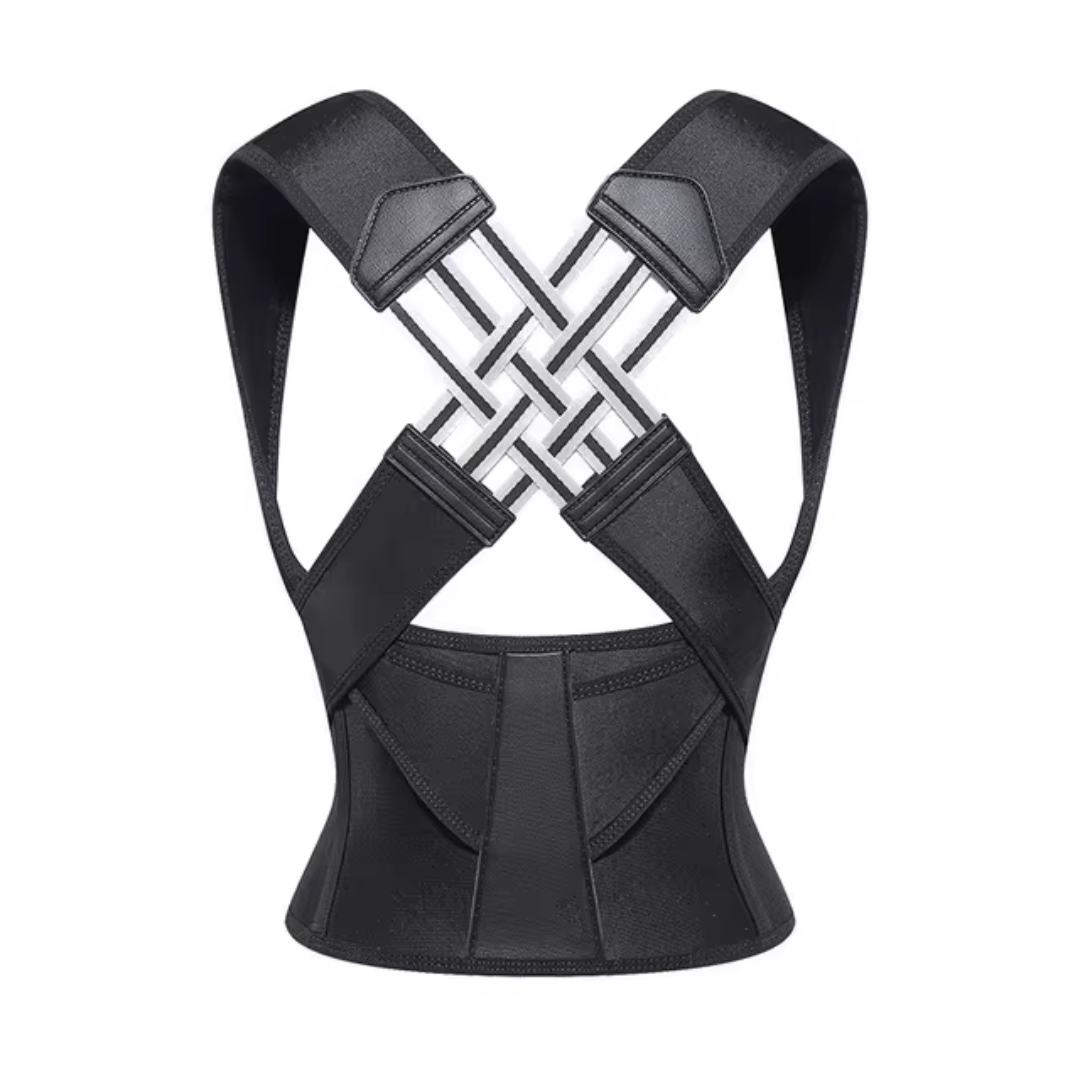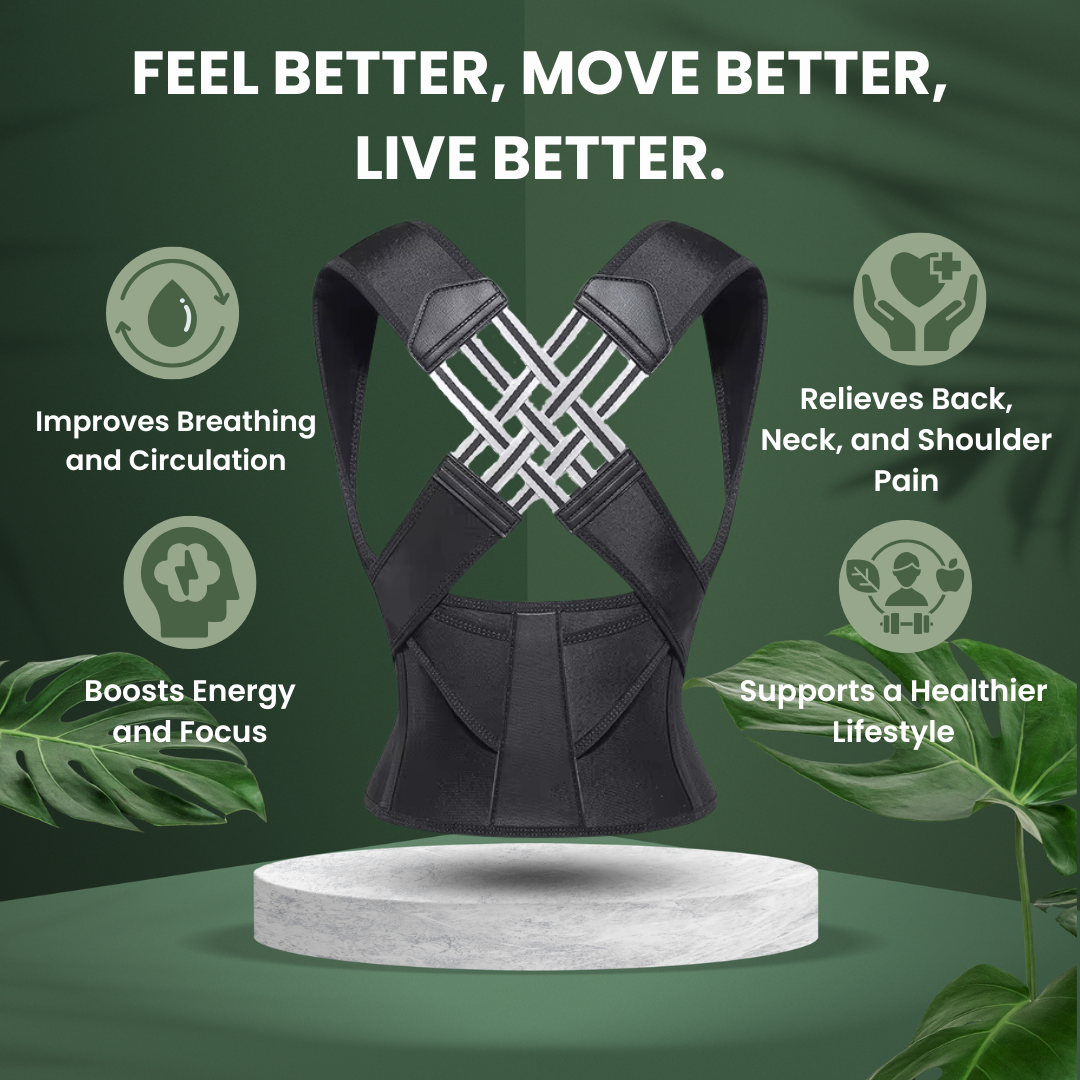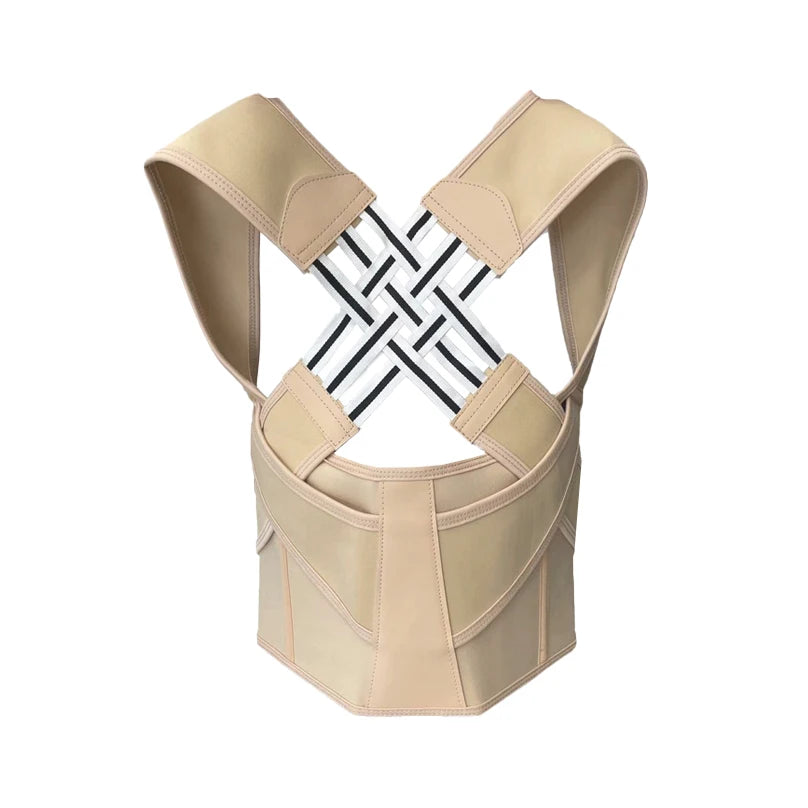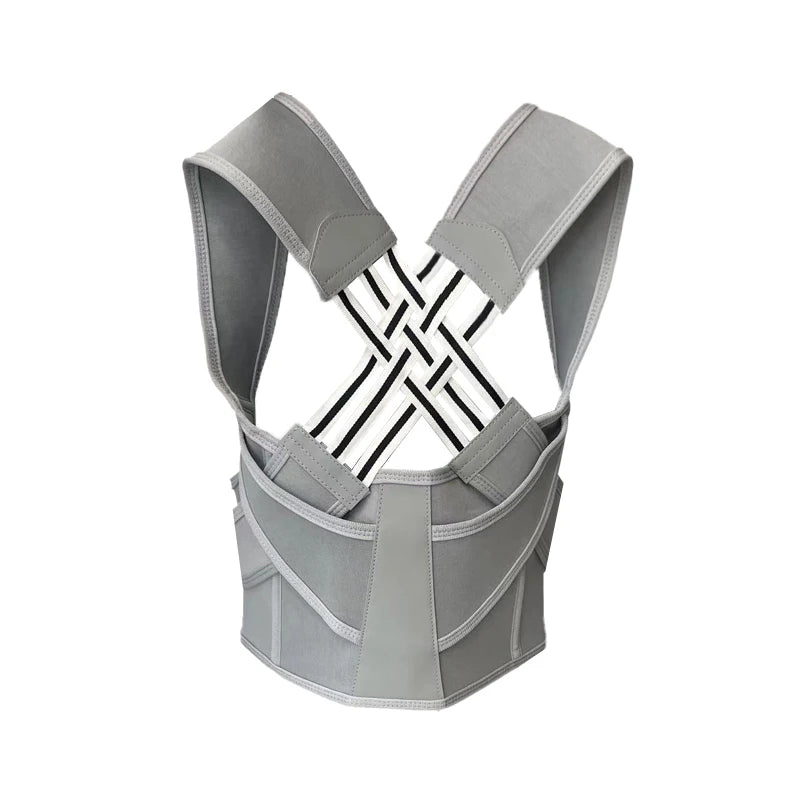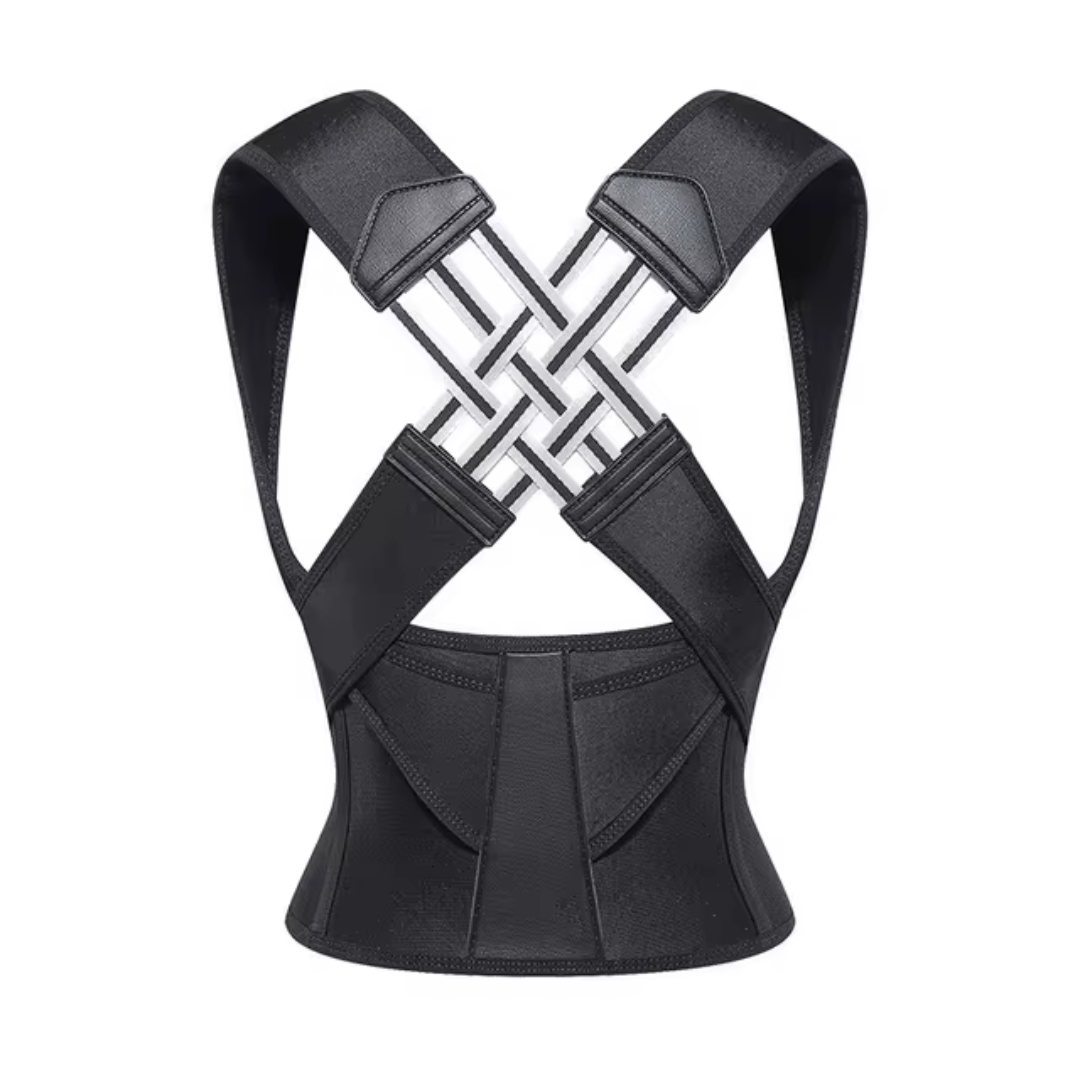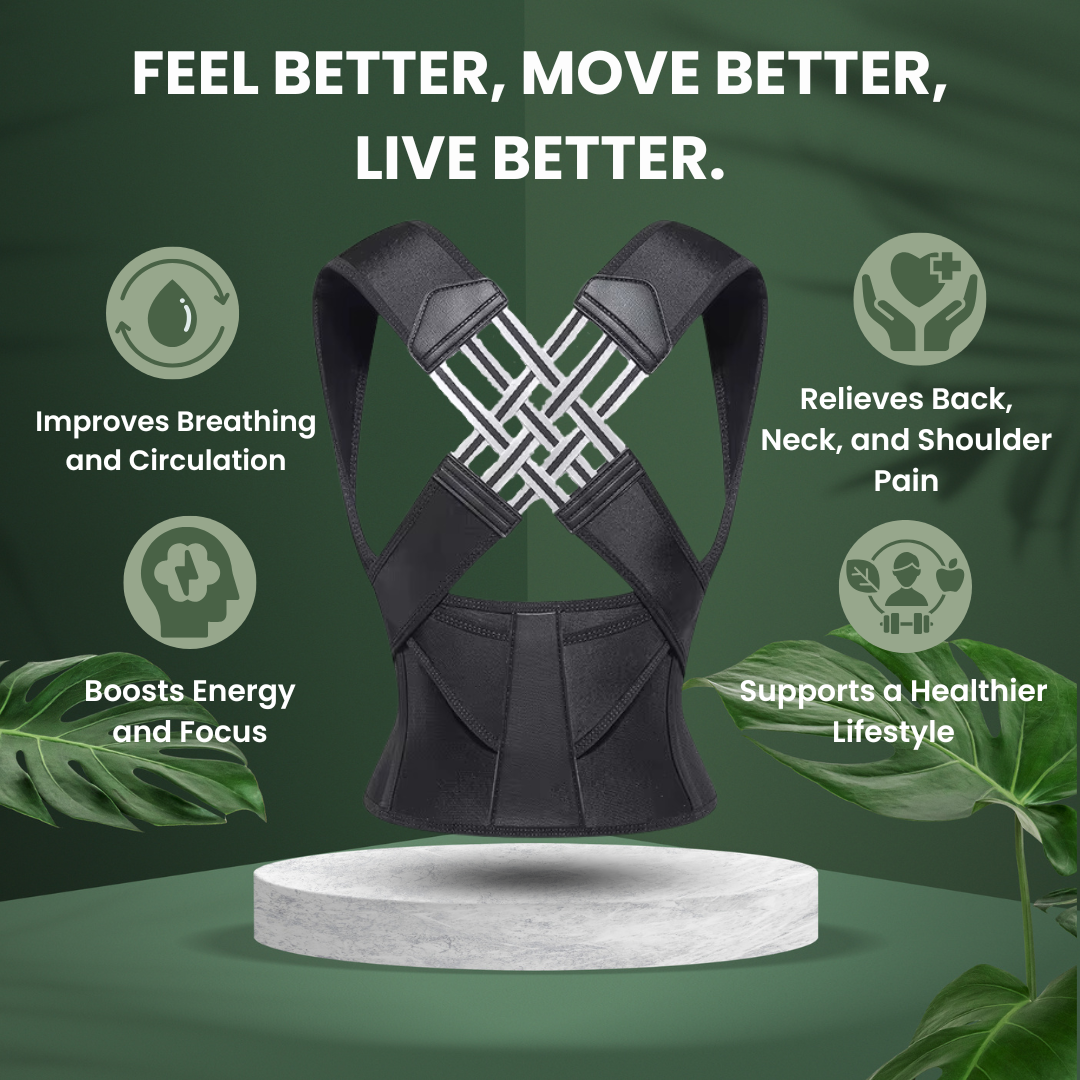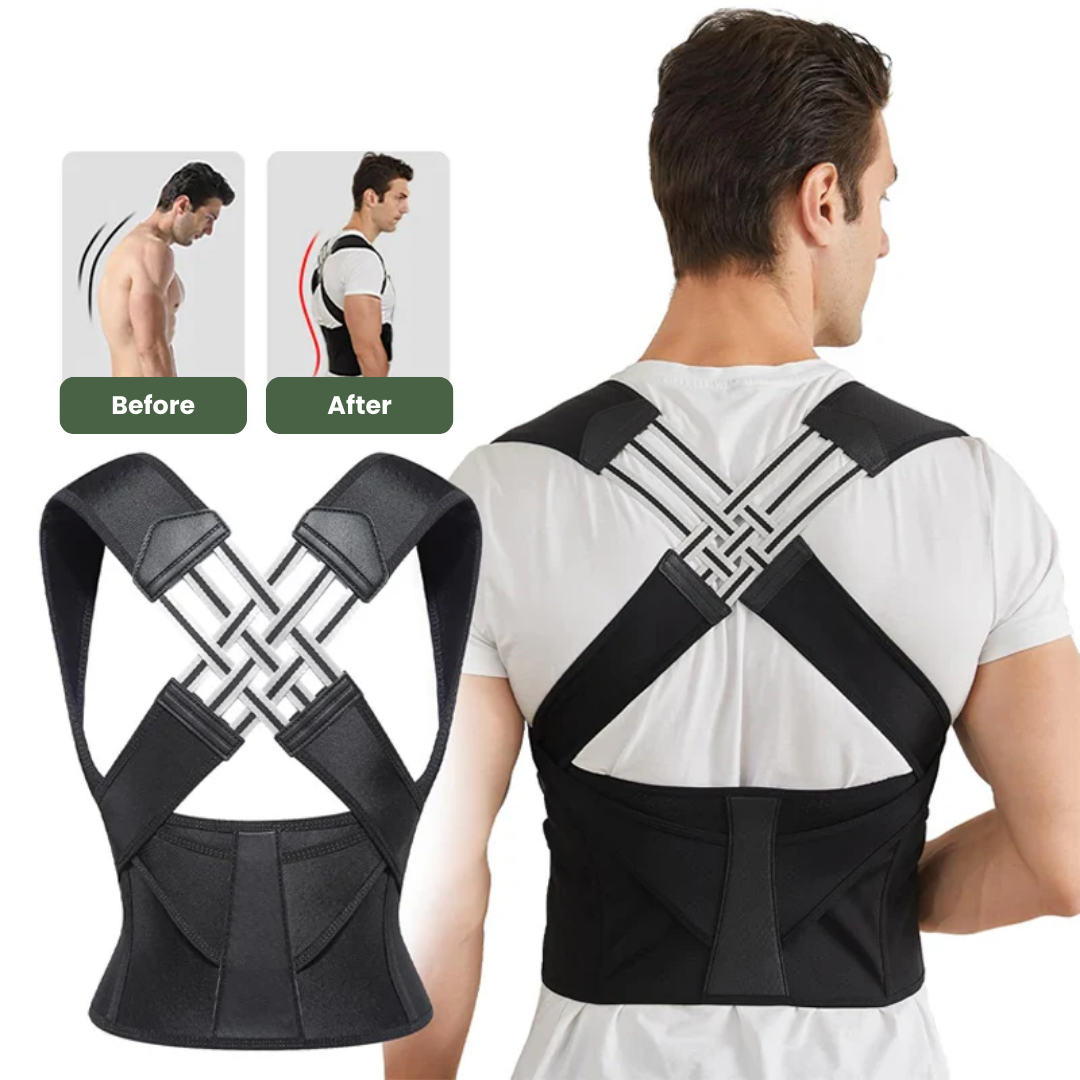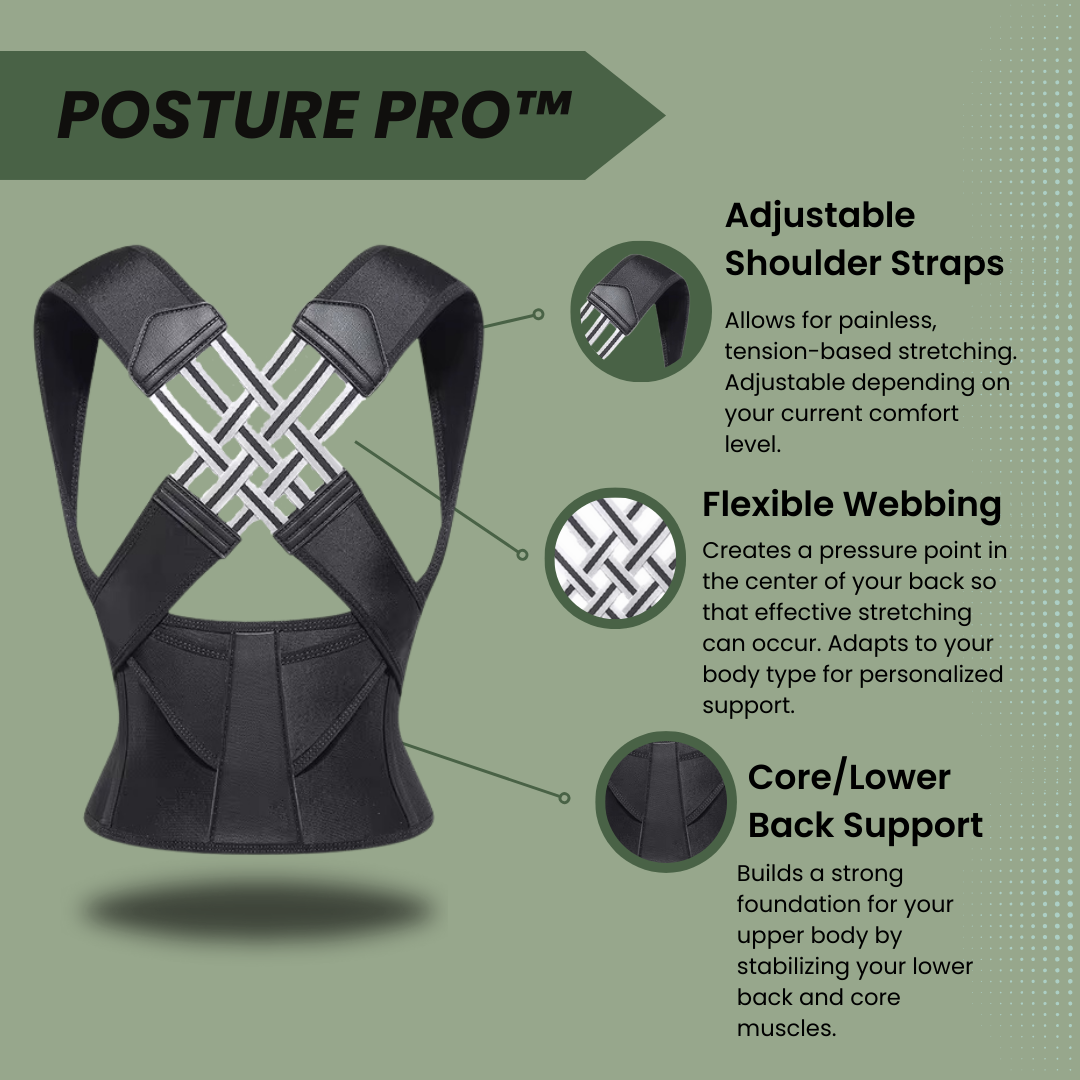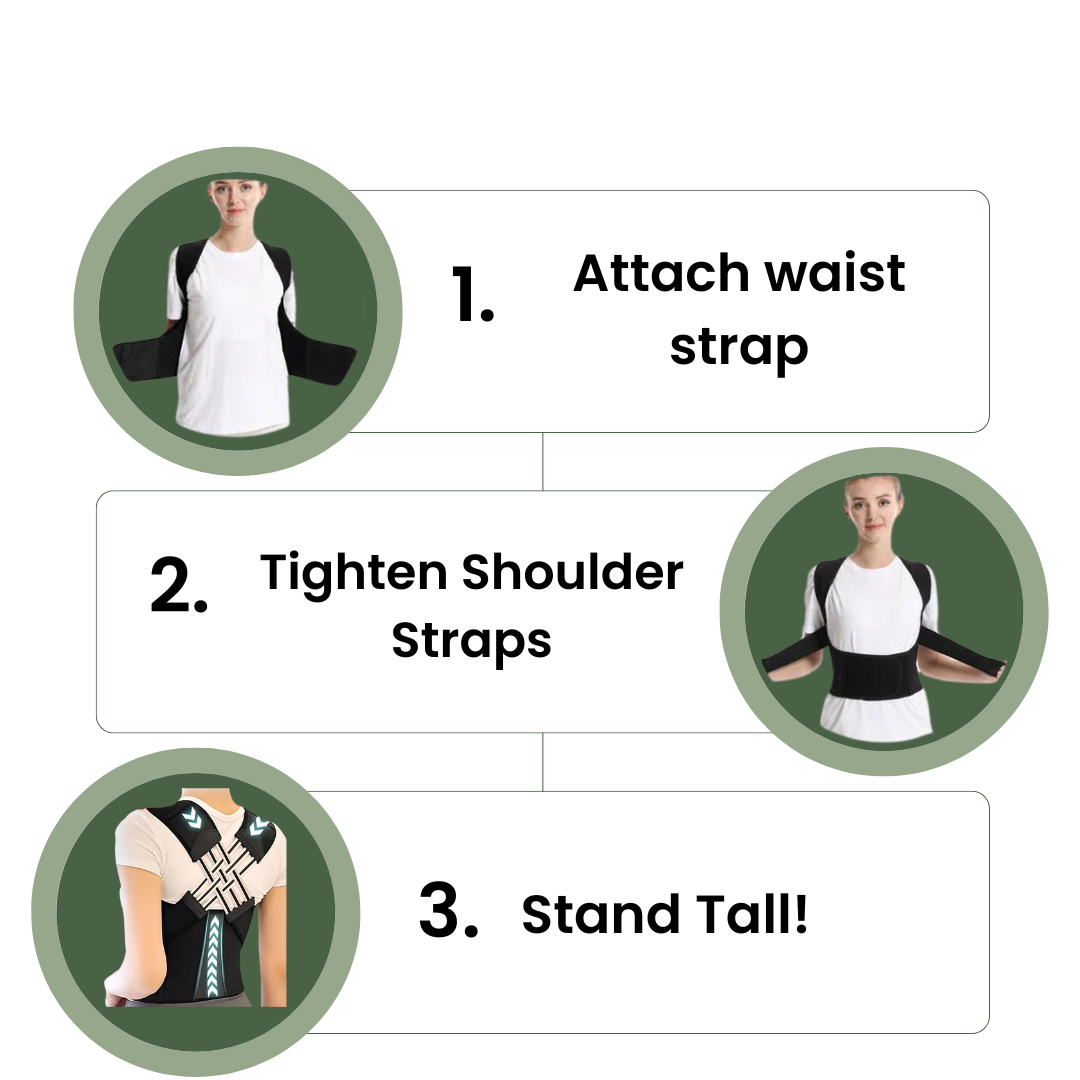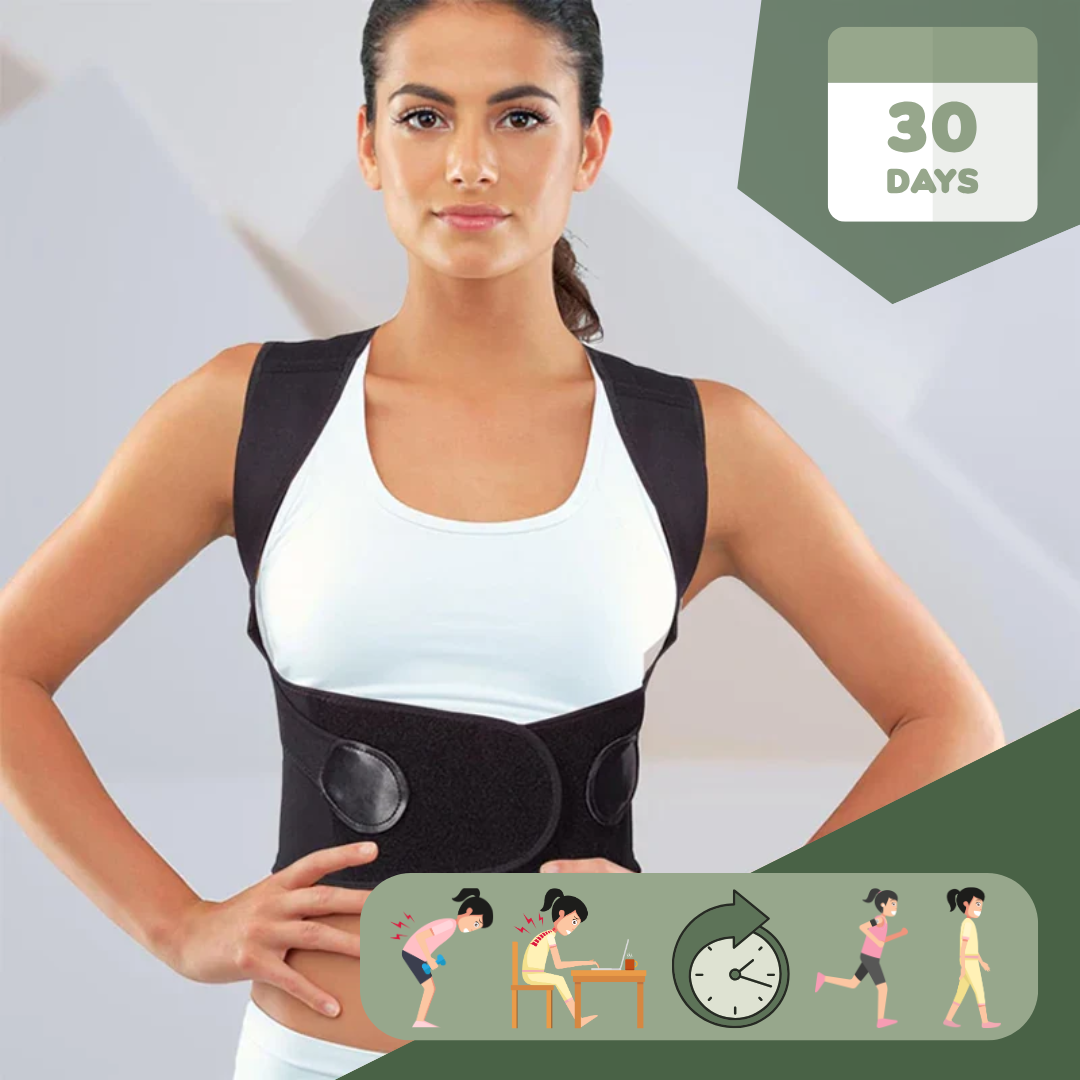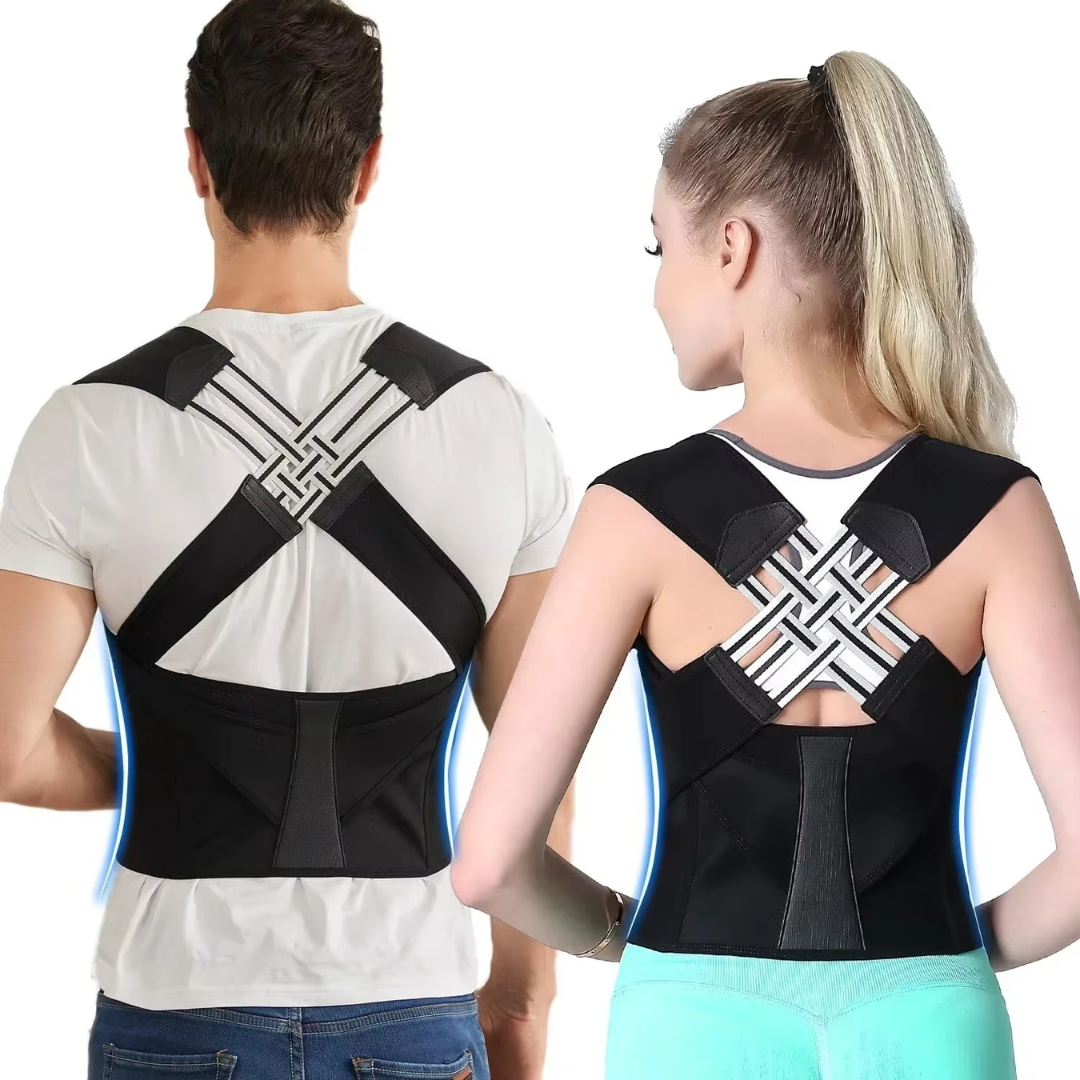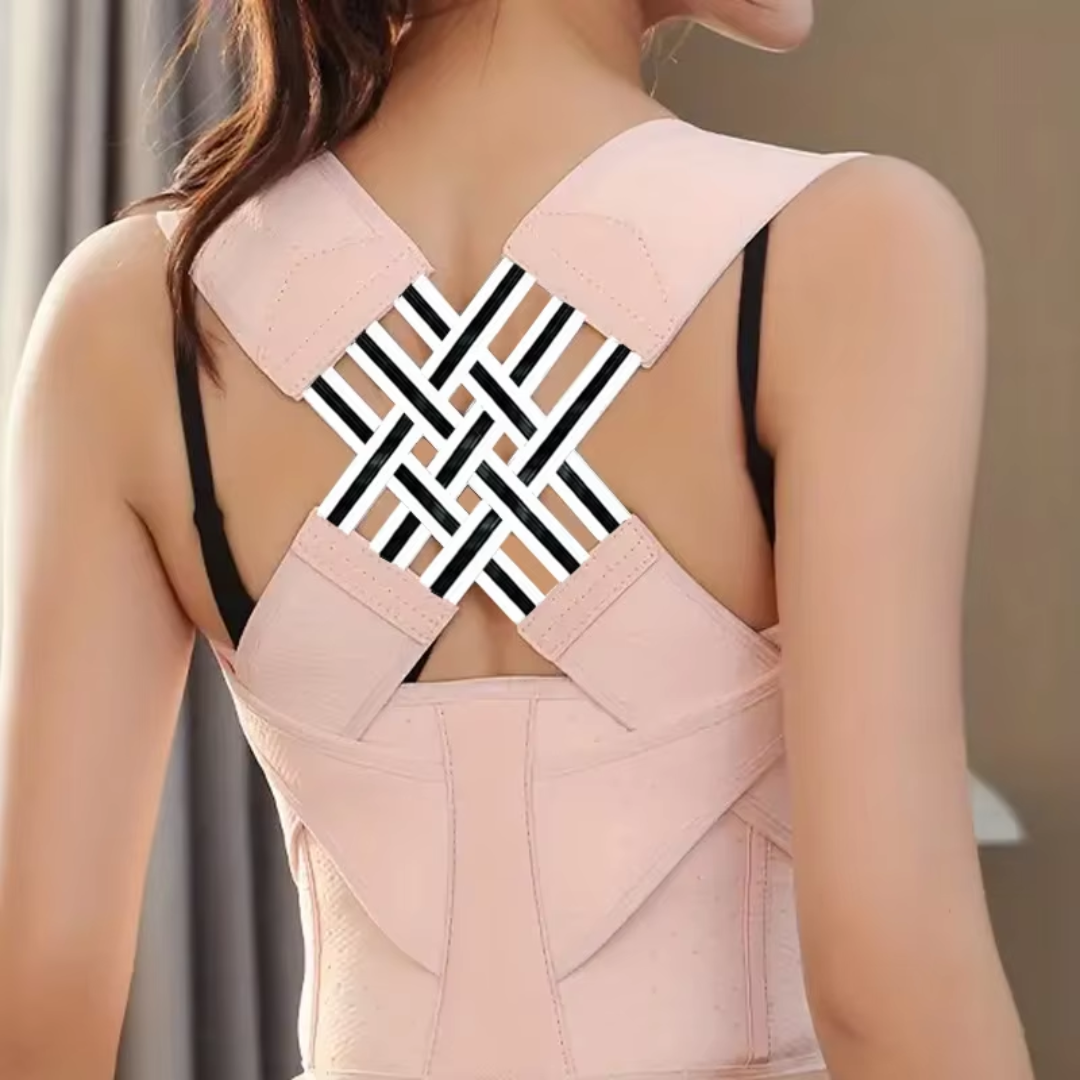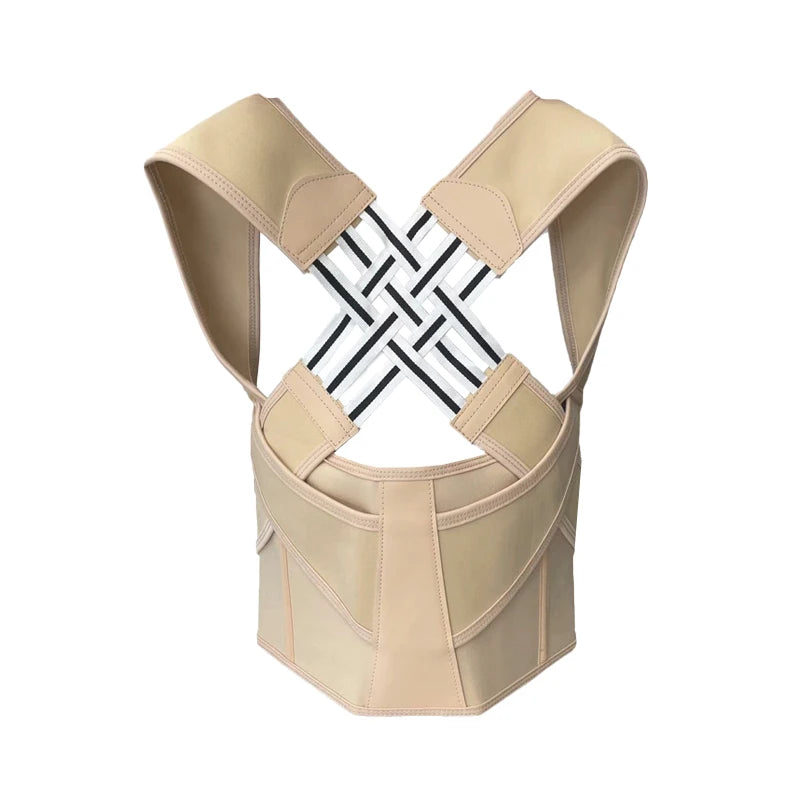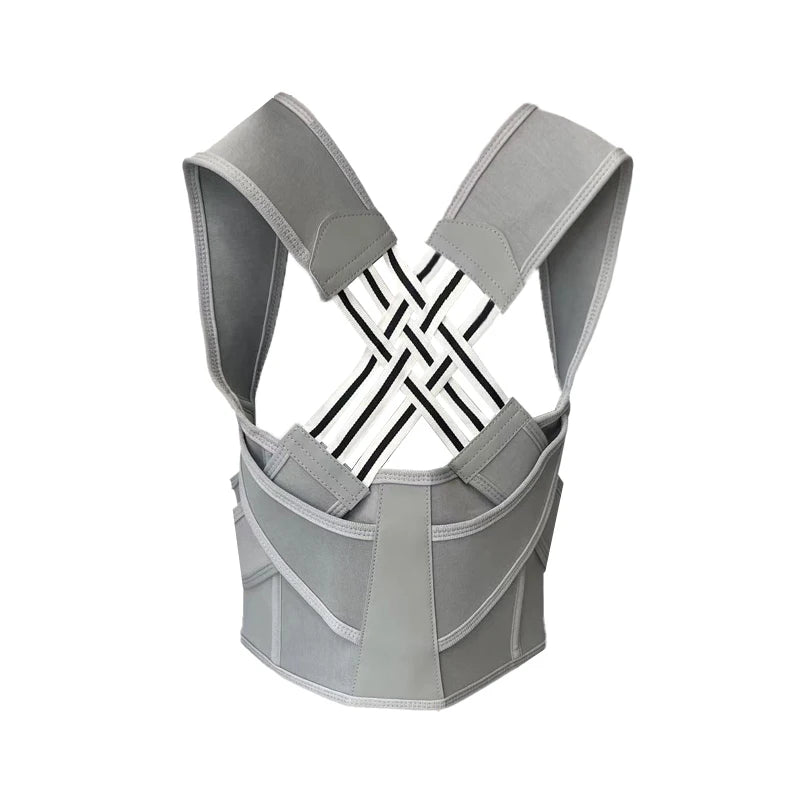Having a sore back is common for many people. A posture corrector can help with this. This article will show you how to clean and take care of your posture corrector.
Key Takeaways
- Always follow the manufacturer's cleaning instructions to keep your posture corrector in good shape. This can include hand or machine washing with gentle detergents.
- Regularly inspect and adjust your posture corrector for signs of wear and tear. Make sure it fits properly without over tightening.
- Store your posture corrector in a cool, dry place away from direct sunlight to prevent damage.
- Avoid using harsh chemicals when cleaning to protect the fabric and elasticity of the posture corrector.
- Consider replacing your posture corrector every six months to a year for optimal support, especially if it shows signs of wear like loose straps or reduced effectiveness.
Why Proper Care for Your Posture Corrector is Important
Taking good care of your posture corrector keeps it working well. It helps your back and shoulders stay in the right shape. A clean, well-maintained corrector is also more comfortable to wear for up to 30 minutes or even six hours a day, as suggested.
This makes sure you get the full benefits like better shoulder muscle function and improved spine alignment.
If you ignore cleaning or checking your posture corrector, it might not fit right anymore or lose its stretch. This means it won't help your posture as much. Proper care ensures that both men and women can use their braces effectively for a long time, keeping them from having to buy new ones often.
A stitch in time saves nine.
Cleaning Your Posture Corrector
Maintaining the effectiveness and hygiene of your posture corrector is crucial. Always adhere to the manufacturer's cleaning instructions, whether hand washing or machine washing, and use the recommended cleaning solutions.
Moreover, make sure to air out your posture corrector regularly after use to keep it fresh and clean.
Check the manufacturer's instructions
Refer to the manual that came with your posture corrector. Every manufacturer has disparate recommendations regarding product care. This manual provides information about whether the item can be machine washed or requires hand cleaning only.
It also delineates which cleaning agents are suitable. Adhering to these directions aids in ensuring your back brace functions effectively and has a prolonged lifespan.
For instance, some posture correctors necessitate gentle soap and cool water. Different ones may be harmed by specific chemicals. The instructions may also provide advice on the optimal drying method, such as placing it flat or allowing it to air dry in a suspended position.
Adherence to these guidelines enables you to benefit maximally from your posture corrector, assisting both men and women to remain comfortable while actively working for better spine alignment.
Hand washing vs. machine washing
Choosing the right cleaning method for your posture corrector is crucial. Here's a simple comparison:
| Hand Washing | Machine Washing |
|---|---|
| Gentle on fabrics, reducing wear and tear. | Can be harsher, leading to faster breakdown. |
| Control over the cleaning process. | Convenient but less control over the roughness of the cycle. |
| Requires more time and effort. | Saves time, allowing for multitasking. |
| Uses less water and energy, making it eco-friendly. | Uses more water and energy, which can impact the environment. |
| Ideal for posture correctors with delicate materials or those that need a gentle touch. | Best for durable posture correctors that are heavily soiled. |
Each method has its benefits. Choose based on your posture corrector's needs and manufacturer's instructions.
Best cleaning solutions to use
To clean your posture corrector:
- Check the manufacturer's instructions for specific cleaning guidelines.
- Hand washing is preferable to machine washing to avoid potential damage.
- Use mild, non-abrasive cleaning solutions, such as gentle detergents or fabric cleaners.
Maintaining Your Posture Corrector
To maintain your posture corrector:
- Regularly inspect it for any signs of wear and tear.
- Adjust the straps to ensure a proper fit.
- Avoid overusing it to maintain elasticity. For more detailed guidance on caring for your posture corrector, read on.
Inspecting for wear and tear
Regularly examine your posture corrector for indications of wear and tear. Seek out fraying edges, weakened straps, or any areas with decreased flexibility. Inspect the Velcro straps to confirm they still hold securely without slipping.
Be watchful for any loose stitching or visible damage on the fabric that could compromise its support. This can assist you in identifying potential issues early and preventing discomfort or reduced effectiveness during use.
Keep in mind that a well-kept posture corrector is crucial for optimal support and function. Thoroughly inspecting it can help prolong its lifespan and ensure it continues to deliver the desired benefits in improving posture and shoulder muscle function.
Adjusting straps for proper fit
To ensure proper fit, inspect the straps for any damage or wear. Adjust the velcro or adjustable straps to comfortably support your shoulders and align your spine. Avoid tightening too much to allow for natural movement while wearing the posture corrector.
If possible, seek guidance from a physical therapist on how to adjust the straps correctly.
Keep in mind to avoid excessive tightening of the straps as it can affect both comfort and effectiveness. Following these steps will aid in achieving optimal support and posture improvement without causing discomfort.
Avoiding overuse to maintain elasticity
To maintain your posture corrector in good condition, refrain from excessive use. Prolonged usage may strain the elastic materials, diminishing its effectiveness. Adhere to the recommended usage duration of up to 30 minutes initially, gradually increasing to a maximum of six hours per day as advised by experts or physical therapists.
This precautionary measure will aid in preserving the elasticity and support of your posture corrector.
Bear in mind, adhering to these guidelines is crucial in preventing strain on the elastic straps and ensuring continual provision of essential support for posture improvement. Furthermore, if feasible, alternating between multiple posture correctors can help deter overuse and uphold their elasticity over time.
By following these straightforward suggestions, you will prolong the lifespan of your posture corrector and optimize its advantages for enhanced posture.
Storing Your Posture Corrector
Store your posture corrector in a cool, dry place. Ensure it's properly folded or hung to maintain its shape and effectiveness. Avoid exposing it to direct sunlight, which can damage the material.
Choosing a cool, dry place
When storing your posture corrector, choose a spot that's cool and dry. This will help maintain its shape and elasticity. Storing it away from direct sunlight is important as well.
Properly folding or hanging it also keeps it in good condition, ready for use when you need it most. Remember to avoid damp or humid areas as these can cause mold or bacterial growth.
This not just extends the life of your posture corrector but also ensures that it continues to provide proper support to improve posture when worn. Proper storage means you can rely on your brace whenever you need it without worrying about any damage or loss of effectiveness from poor care.
Keeping it folded or hung properly
When storing your posture corrector, always opt for a cool and dry place. Proper storing maintains its shape and support. If you fold it, ensure to minimize creasing the material. Hanging it on a hanger or hook can also help maintain its elasticity.
Avoid direct sunlight exposure to prevent damage over time.
Additionally, regularly examine your posture corrector for any signs of wear and tear before storing it. This involves checking the straps for any damage or loosening to ensure the proper fit next time you use it.
Avoiding exposure to direct sunlight
Store your posture corrector in a place away from direct sunlight. Sun exposure can damage the fabric and impact its elasticity, ultimately reducing its lifespan. Ultraviolet (UV) rays from the sun can also weaken the materials used in posture correctors, leading to wear and tear over time.
If left exposed to direct sunlight for extended periods, your posture corrector may lose its effectiveness in supporting your back and shoulders.
A study in a peer-reviewed journal revealed that prolonged sunlight exposure could lead to material degradation of various textiles, potentially affecting the durability of products like posture correctors.
Keep your device away from windows or outdoor areas where it might be subject to direct sunlight to extend its useful life and ensure it continues providing effective support for improved posture.
Tips for Prolonging the Life of Your Posture Corrector
To keep your posture corrector in top shape, consider rotating between multiple correctors for extended use. Harsh cleaning chemicals can damage the fabric of your posture corrector, so opt for gentle solutions to maintain its quality.
After wearing your posture corrector, regularly air it out to prevent odor and prolong its lifespan.
Rotate between multiple posture correctors if possible
If you have more than one posture corrector, try using them on different days. This can help prevent strain on the same muscles all the time and give each corrector a break to maintain its elasticity.
It's best to switch between multiple posture correctors if you can. This helps distribute the support across different areas of your upper body and reduces the risk of overusing or straining particular muscles.
Rotation also gives each corrector a chance to recover its shape and effectiveness after use.
Avoid using harsh chemicals during cleaning
When cleaning your posture corrector, steer clear of using harsh chemicals. Refer to the manufacturer's instructionsfor the suggested cleaning solutions. Hand washing with a gentle detergent is frequently the optimal choice to preserve the fabric and elasticity of the posture corrector.
Harsh chemicals can break down the materials and impact its supportive properties, thus reducing its lifespan. Bear in mind that using non-recommended solutions may harm or diminish its effectiveness over time.
It is crucial to strictly follow these guidelines as they will help prevent any unnecessary wear and tear on your posture corrector, ensuring its continued effectiveness without compromising its structural integrity.
Regularly air out your posture corrector after use
After using your posture corrector, it's crucial to let it air out regularly. This helps in preventing moisture buildup, which can lead to unpleasant odors and bacterial growth. Hanging your posture corrector in a cool, dry place allows for proper ventilation, keeping it fresh and ready for the next use.
It's recommended to avoid storing your posture corrector in damp or humid areas as this can promote mold and mildew growth. It's better to unfold or unhook straps when airing out the corrector to ensure thorough ventilation.
Moreover, avoiding direct sunlight exposure is vital as excessive heat can damage the materials and elasticity of the posture corrector over time.
Common Mistakes to Avoid
- Neglecting regular cleaning
- Ignoring signs of damage
- Storing in damp or humid areas
Continue reading to learn more about caring for your posture corrector.
Skipping regular cleaning
Failing to clean your posture corrector regularly can result in a buildup of dirt, sweat, and bacteria. This accumulation not only creates an unsanitary environment but also undermines the effectiveness of the posture corrector.
Neglecting regular cleaning can lead to skin irritation due to prolonged contact with bacteria and allergens. Proper cleaning helps preserve the breathable design and antibacterial properties of the posture corrector, ensuring that it continues to provide the necessary support for improving posture.
It's important to realize that not cleaning regularly might involve potential health risks due to bacterial growth on the fabric, which could lead to skin issues such as rashes or itching.
Furthermore, disregarding proper maintenance may shorten the lifespan of your device, compromising its overall efficacy in supporting improved posture and reducing back pain. Regularly airing out your posture corrector after use and following the manufacturer's cleaning instructions will help keep it in optimal condition for longer use while enhancing comfort during wear.
Ignoring signs of damage
Neglecting signs of damage in your posture corrector could compromise its effectiveness and potentially cause harm to your body. Indications such as fraying straps, worn-out material, or weakened elasticity should be taken seriously.
Regularly examine your posture corrector for any signs of wear and tear. Overlooking these signs can result in diminished support and may even worsen posture instead of correcting it.
Be thorough in assessing the condition of your posture corrector to ensure that it continues to offer the intended benefits without jeopardizing your well-being.
Keep in mind that a damaged posture corrector might fail to provide the necessary support, leading to potential discomfort or adverse effects on your body's alignment over time. This is essential not just for the product's longevity, but also for achieving the desired enhancements in posture and muscle function.
Storing in damp or humid areas
Storing your posture corrector in damp or humid areas can cause mold and bacterial growth. To avoid this, choose a cool, dry place for storage. Hang or fold the corrector properly to maintain its shape and elasticity.
Keep it away from direct sunlight as exposure can damage the fabric and affect its effectiveness over time. Following these steps will help prolong the life of your posture corrector and keep it clean and hygienic for use.
It's crucial to safeguard your investment by storing your posture corrector appropriately according to these guidelines. This way, you'll ensure that it remains in good condition, ready for whenever you need it without any moisture-related issues compromising its functionality.
When to Replace Your Posture Corrector
Knowing when to replace your posture corrector is crucial. To maintain its optimal support, look for signs like overstretched straps or reduced effectiveness over time.
Signs it’s time for a replacement
If your posture corrector shows signs of wearing out, such as loose straps or worn material, it's time to replace it. Also, if the Velcro straps lose their grip and can't hold the corrector in place, get a new one.
Another signal is when the structure starts to lose its shape and support. If you notice any of these signs, consider replacing your posture corrector for optimal effectiveness. Keep in mind that using an old and worn-out posture corrector may not provide the necessary support to improve your posture.
When contemplating a replacement, consider how long you've been using your current posture corrector. Over time, regular use can cause wear and tear which compromises its efficiency.
It's recommended to replace a posture corrector after 6-12 months of consistent use for better results.
Make sure to regularly check for these signs so that you are always getting the full benefits from wearing a posture corrector.
How often to replace for optimal support
To maintain optimal support, consider replacing your posture corrector every six months to a year. If you notice signs of wear and tear such as stretched straps or decreased elasticity, it's time for a replacement.
Regularly inspecting your posture corrector helps ensure it provides the necessary support for proper posture improvement. By adhering to this replacement schedule, you can continue to benefit from the enhanced muscle function and improved posture that a well-maintained posture corrector offers.
Regular inspections are essential to monitor the durability and reliability of your back brace. Seeking expert advice on when to replace your posture corrector can provide customized guidance based on individual usage and specific design features of the product.
Conclusion
In conclusion, taking good care of your posture corrector is critical for maintaining its effectiveness and ensuring it lasts longer. Regularly cleaning and inspecting your posture corrector helps to keep it in top condition.
Proper storage in a cool, dry place also contributes to preserving its quality. By following these simple steps, you can prolong the life of your posture corrector and continue to benefit from improved posture and shoulder muscle function.
FAQs
1. How do I care for my posture corrector purchased from Amazon.com?
You can care for your posture corrector by ensuring it's kept clean and dry. If it has anti-bacterial properties, you may not need to wash it as often. Avoid using harsh detergents or dry cleaning.
2. What should I look out for when buying a posture corrector on Amazon Prime?
When shopping on Amazon Prime, check the price at checkout before confirming the transaction with your credit card. Look for features such as adjustable velcro straps, breathable design, shoulder support and whether it's suitable for both men and women.
3. Does wearing a posture corrector help improve my blood lactate levels during weight lifting or deadlifting?
While a back brace like a posture corrector provides support during weight lifting or deadlifting, its main purpose is to assist in maintaining proper alignment of the body rather than directly impacting blood lactate levels or lactic acid production.
4. Can I wear my posture corrector like an Upright Go device under my backpack?
Yes, most posture correctors are designed with slim profiles that allow them to be slipped on under clothing items such as backpacks without causing discomfort due to their adjustable straps and breathable design.
5. Does Amazon provide free delivery for this product?
Yes! With Amazon prime membership you get benefits like free delivery which ensures secure transactions right up till your doorstep!
6. Is there any special way to put on my Posture Corrector?
Most Posture Correctors come with adjustable Velcro straps which allows easy slipping-on process; just ensure shoulder supports are properly aligned while adjusting straps according to comfort level.


